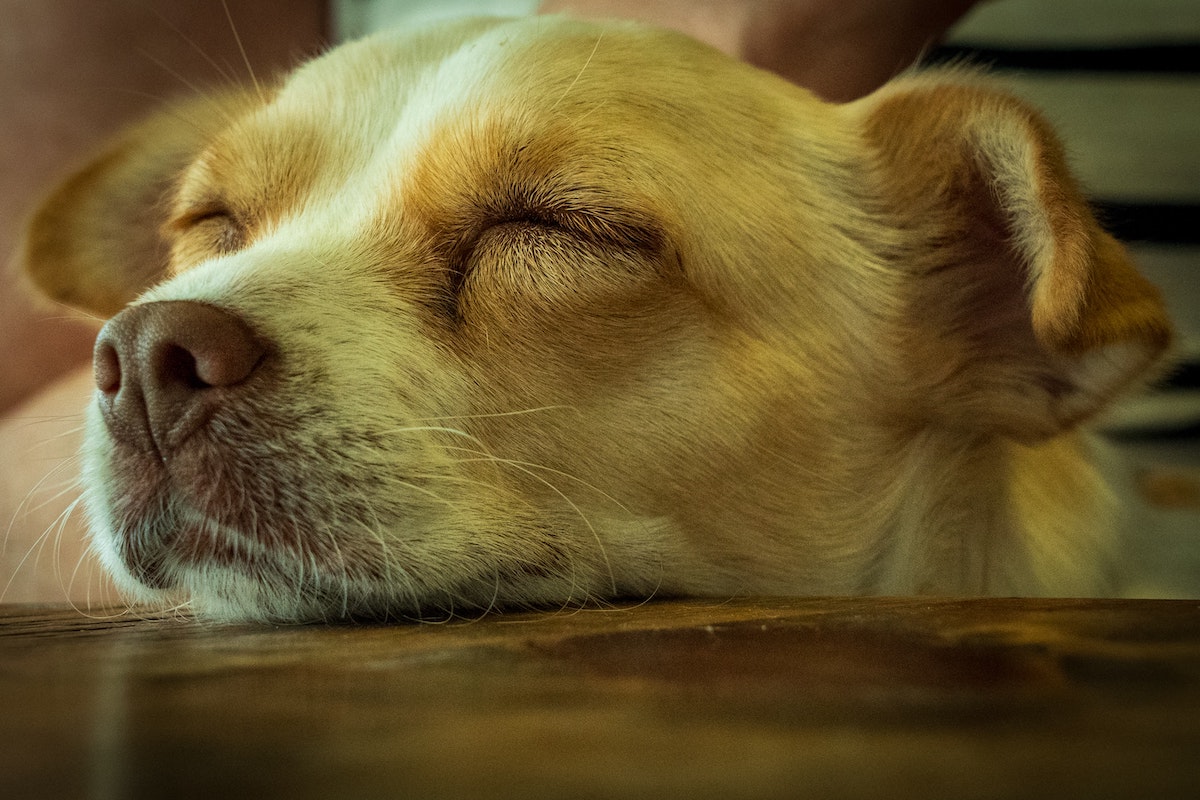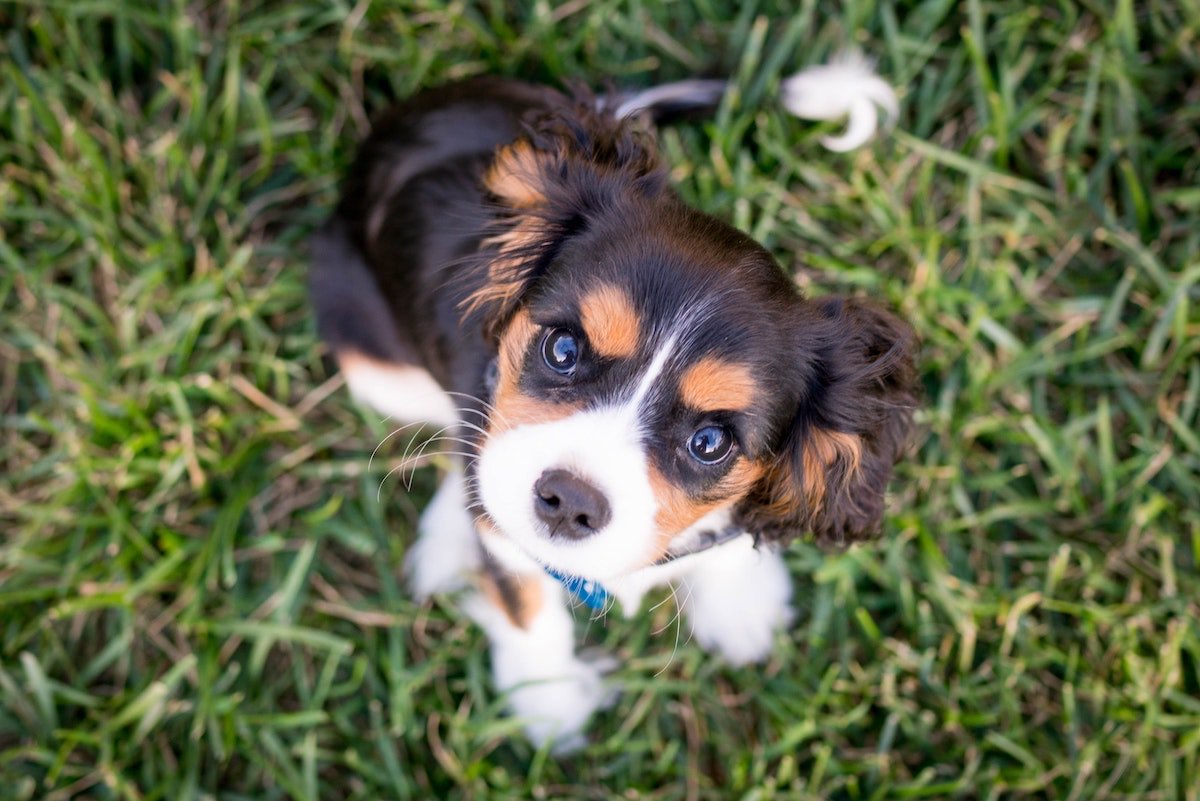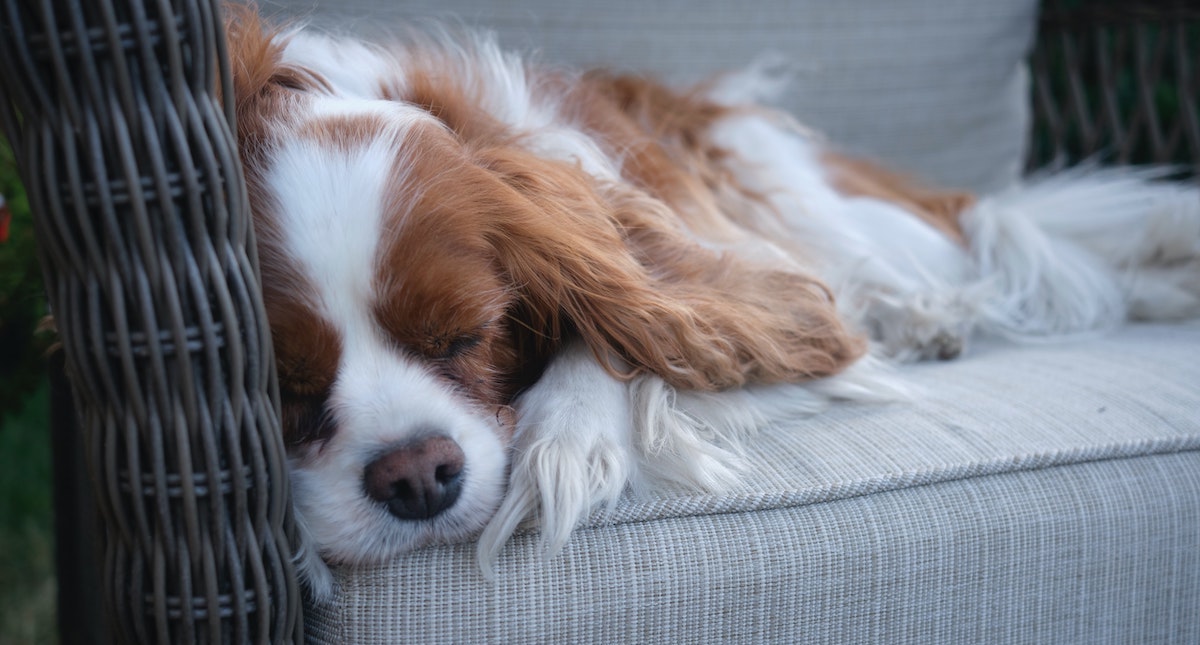Humans have chosen dogs as their closest companion species due to their particularly visible social and playful traits. This is partly due to the neoteny of dogs, as humans selected the least fearful individuals from the wild, but the playfulness of wolves in their natural habitat has certainly had an impact as well. For both species, play serves an important function not only in creating social bonds but also in practicing various skills, such as hunting. Play not only provides pleasure but also maintains the dog's agility and thus its ability to better survive in its environment. Play is vital for both the dog's physiological functioning and its sense of survival.
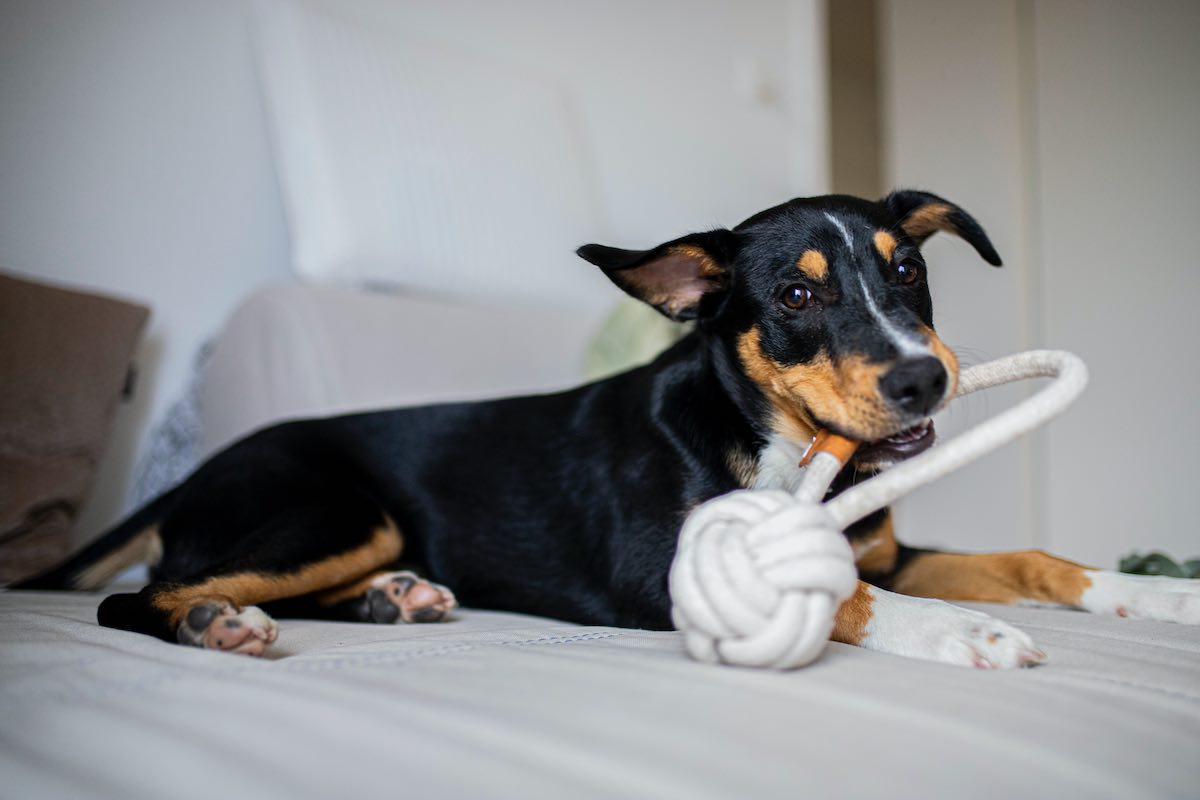
The opportunities for play have a significant impact on a dog's well-being, which in turn is the most important aspect of training a dog to be alone. The unfulfillment of social needs will almost certainly make alone-time training more challenging. For this reason, the daily life of a dog practicing being alone should include opportunities to play with both humans and other dogs.
When a dog doesn't play
Sometimes, to the owners' dismay, a new family member arriving home isn't playful. In such cases, it's crucial to thoroughly examine the dog's health. If health doesn't explain the dog's lack of play, the reason may also be found in the dog's living conditions. For example, recurring stress and fears in everyday life often reduce a dog's playfulness.
The problem can also stem from the dog's unsociability towards other dogs. An unsociable dog may genuinely be a more independent individual, but more likely it hasn't had enough safe social interactions for some reason. A dog owner might feel uncertain about letting their dog meet other dogs if it doesn't seem social, or if it barks at passersby when on a leash. The best option in an uncertain situation is to let the dog get acquainted with a known friendly and socially skilled dog, familiar to the owner, with which the dog can interact calmly, for example, on different sides of a dog park fence. This should always be done in a two-sided dog park without the need for the dogs to be leashed.
Sometimes the reason for the lack of play can be found in the incompatibility of play styles between the dog and its owner or problems in interaction. If the dog perceives its owner as unpredictable, it may avoid play. Sometimes more obvious reasons are visible in the play itself. For example, when playing with a rope toy or a soft toy, the dog should win often enough and be able to grab the toy in ways that are pleasant for the dog. The best toy play usually includes different phases from grabbing the toy to various holds, such as hanging on the toy, pulling from side to side, or tugging towards the dog itself. Many dogs stop playing altogether if the play doesn't include pleasant phases or if it contains something unpleasant, such as bringing the toy directly towards the dog's mouth. The toy should always move away from the dog, along the ground, and from side to side.
Some dog owners might feel that the dog doesn't play if it doesn't want to fetch a ball or a stick. When fetch play doesn't excite, it's worth trying other games with the dog. Throwing a ball itself is too stimulating for many dogs in any case.
Play style can depend on breed
Dogs have been bred for different purposes depending on the breed, such as herding or hunting. Games often differ depending on the breed or personal characteristics. Some dogs enjoy wrestling and using their teeth more, while other dogs prefer chasing games. The best way to discover your dog's play style is by enabling safe interactions with other social dogs. Good situations are play sessions with two or three dogs. Larger groups are rarely calm enough for many dogs.
Herding dogs often enjoy herding activities. If herding games are not available enough, the behavior might shift to herding the vacuum cleaner, for example. A dog wishing for inappropriate games should be guided to other activities at that moment, while considering how to offer more appropriate herding games to the dog in the future. For example, prey games with a rope toy are very enjoyable for many dogs.
If a dog enjoys wrestling with other dogs, it might also like rougher handling with humans. Some dogs like to wrestle with humans as well, while for others, a small playful push to the side with a hand during a tug game is enough.
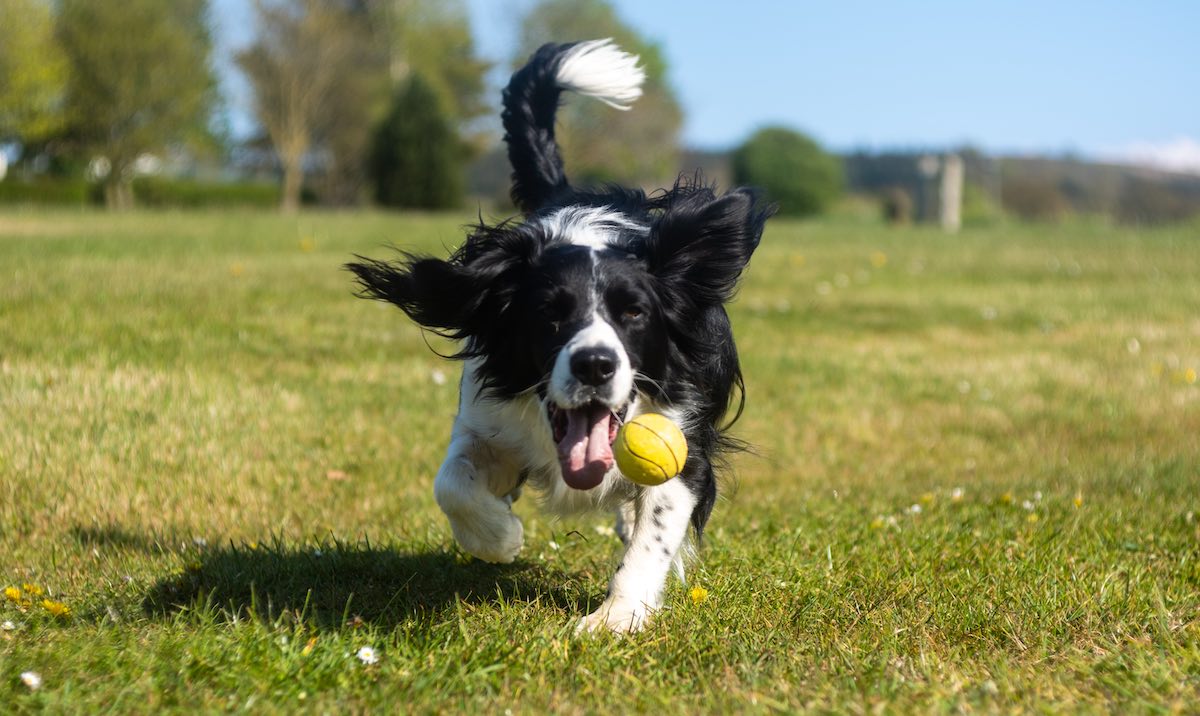
A large proportion of dogs enjoy throwing games. Often, however, the line between enjoyment and over-excitement is blurry and difficult for the dog owner to recognize. Throwing games can also trigger similar bodily reactions as many problem behaviors, which is why throwing games may not necessarily be the best choice when training to address problem behaviors. However, if old play styles are reduced or stopped, they should always be replaced with other, more suitable games. The excitement of throwing games can be compensated for, for example, with various impulse control games that are done with a similar toy and contain the same elements without the over-exciting effect.
Uncontrolled play
Sometimes dog owners report that playing with the dog is impossible due to the dog's over-excitement. The dog might, for example, jump up against the owner and nip quite hard. However, solving the situation usually requires more effective problem-solving instead of inaction, so that the dog can be balanced. Over-excitement in play is always a sign of a problem. To solve the problem, one should understand the causes of over-excitement, as merely preventing exciting activities will cause even more over-excitement in the future.
Causes of over-excited play:
-
Limited opportunities for play
When there isn't enough play and it often ends in conflict, the dog's expectations towards play grow even more. Managing emotions becomes increasingly challenging, and frustration can start to mix with positive emotions excited about play. -
Health problems
A dog with health issues often doesn't slow down but utilizes the body's natural painkiller: adrenaline. Dogs often have more speed the more pain they're in. -
Learning history
If the dog has gained access to toys by jumping up against its owner or, for example, by nipping hands, these behaviors are often part of the play from the dog's perspective. Learning new games can help. However, it's more likely that the behaviors are a result of the dog's excitement, which stems from well-being rather than just learning. -
Interaction relationship with the owner
The dog's upbringing methods greatly affect its arousal states. According to studies, punishing the dog and an environment that causes uncertainty lead to anticipatory frustration and aggressiveness in the dog. Dog guidance should focus on encouraging and rewarding the dog for many reasons, but in terms of play, among other things, so that the dog doesn't anticipate future punishments or the owner's irritation by showing over-excitement in all phases of play. -
Impaired recovery
Sometimes there might be too few restorative factors in a dog's life. A poorly recovered dog can be tired and overloaded, which manifests as over-excitement in life.
Final words
A social dog needs a lot of play for its mind and body to support its balance. Games with humans are at their best when enjoyable for both parties. It's worth practicing suitable joint games if a common tune hasn't been found yet! Trying new play styles will surely delight even a dog that already plays a lot.
If a dog doesn't play, its health should be checked. In addition to this, everyday fears can produce a burden that prevents play. In these situations, the dog's well-being should be prioritized until the dog can live a normal life with play and all other essential activities.
In terms of alone-time training, playing is a very important cornerstone. The lack of play should be addressed alongside other well-being factors even before starting the actual training.
 Deutsch
Deutsch English
English Español
Español Français
Français Italiano
Italiano 日本語
日本語 Português
Português Suomi
Suomi Svenska
Svenska

